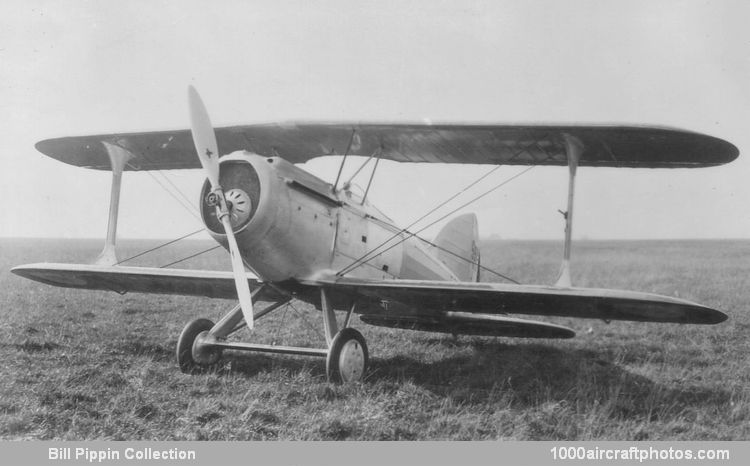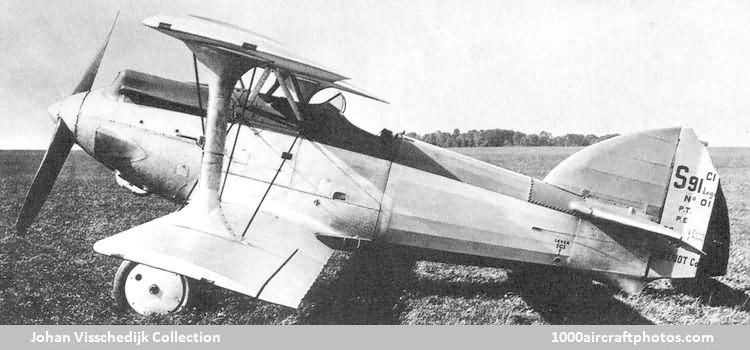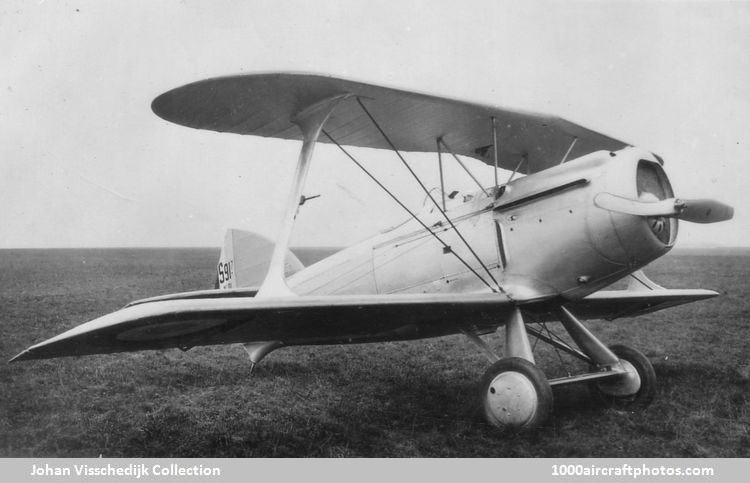06/15/2013. Remarks by
Johan Visschedijk: "In the mid-1920s, the French Air Ministry was concerned about the growing threat from bombers.
aThe solution to this dilemma was the "Jockey", a program for a light-weight fighter which was intended to ensure the defense of individual objects, and compared to standard fighters, it would be produced in larger quantities.
aThe specification called for an aircraft with a high rate of climb and maneuverability,
aalthough with a relatively modest range of up to 249 mls (400 km), and armed with two machine guns.
a
In response to this specification Blériot-SPAD developed the S.91, a single-seat biplane with single-bay wings of equal span. Of all-metal construction it was fabric covered, with exception of the metal-covered engine compartment.
S.91 Leger (
Johan Visschedijk Collection)
a
The first prototype, referred to as the Type S.91 Leger (Light),
awas powered by a 500 hp Hispano-Suiza (HS) 12Hb twelve-cylinder liquid-cooled V-engine with radiators mounted on the main landing gear legs.
aFlown for the first time on August 23, 1927, it was followed by a second prototype, the Type S.91
1, which differed primarily in having a frontal radiator in place of the twin leg-mounted radiators.
a
This second prototype was subsequently fitted with a 500 hp HS 12Gb twelve-cylinder engine of W-configuration as the Type S.91
2, flying in this form on August 31, 1928. After demonstrations in Romania and Greece, it was again re-engined as the Type S.91
3 with a 420 hp Gnome & Rhône Jupiter 9As nine-cylinder air-cooled radial. Early in 1931 it received a 480 hp Jupiter 9Ae as the Type S.91
5, but was destroyed on May 10 after six hours flying in the latter form.
The original Type S.91 Leger had meanwhile been fitted with a 500 hp HS 12Mb V-engine and, with various minor modifications, became the Type S.91
4, which first flew on July 4, 1930. The radiators were placed on top of the upper wing, rounded wing tips were then applied,
athe fuselage was lengthened and the tail plane was lowered to the base of the fuselage, flight testing being resumed on November 10, 1931 as the Type S.91
6. The tail plane was later restored to its original position, but both the 1926 and subsequent lightweight, or "Jockey",
afighter programs had meanwhile been abandoned and none of the competing designs had been ordered into production.
a
Despite the "Jockey" being abandoned, André Herbemont persisted with the development of the Type S.91 series fighters and, in October 1930, designed a new version. This, while retaining a fuselage similar to that of the Type S.91
4, employed an entirely new wing arrangement of inverted sesquiplane-configuration.
aAilerons were fitted to the lower wing only, this having a span of 28 ft 4.5 in (8,65 m) compared with the 22 ft 11.625 in (7,00 m) of the upper wing.
a
S.91
7 (
Johan Visschedijk Collection)
a
Designated Type
S.917 and powered by a 500 hp HS 12Mc V-engine, the new model was flown for the first time on December 23, 1931.
aOn June 2, 1932, it established a 311 mls (500 km) closed-circuit record of 191.87 mph (308.78 kmh). It was subsequently fitted with a supercharged HS 12Xbrs V-engine as the Type S.91
8, a variable-pitch Ratier propeller being adopted and a max speed of 224 mph (360 kmh) being reportedly achieved.
a
The prototype was first flown in its Type S.91
8 form on August 20, 1932, and in the following December was leased to Hispano-Suiza as a test bed for the company's engine-mounted 0.787 in (20 mm) cannon,
awhich was duly fitted, together with a large-diameter Levasseur fixed-pitch propeller, the designation then being changed to Type S.91
9.
(For convenience the sub-version designations are often written as S.91/1 to S.91/9 or as S.91-1 to S.91-9.)"


